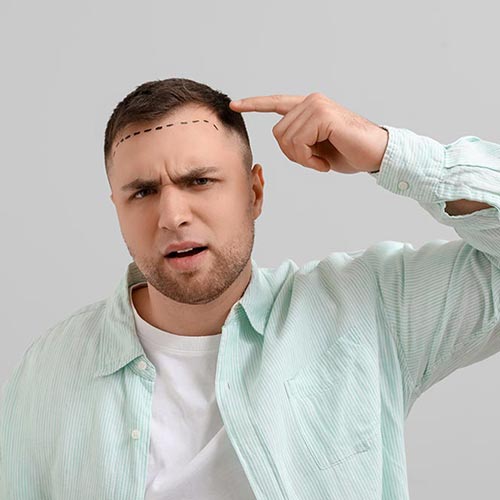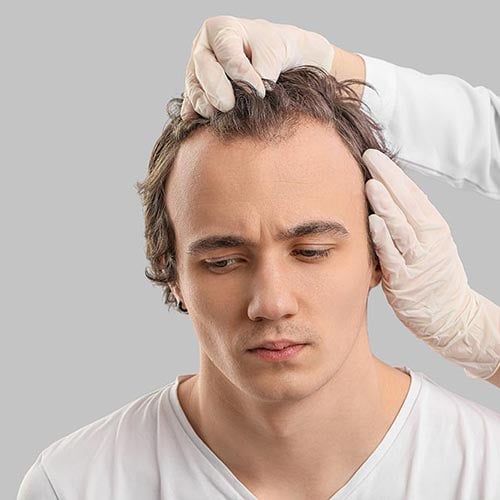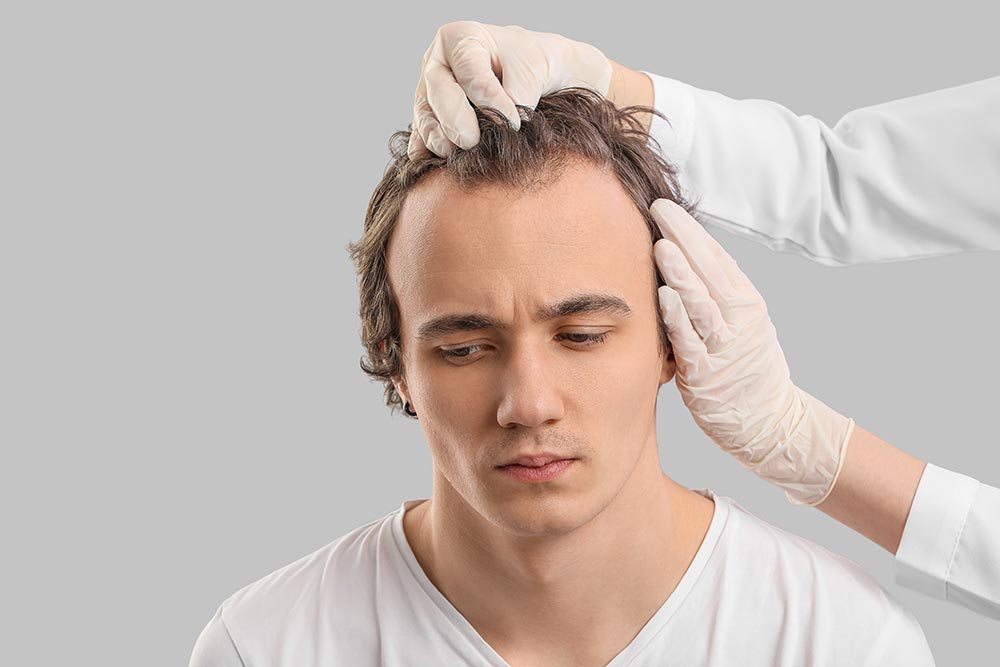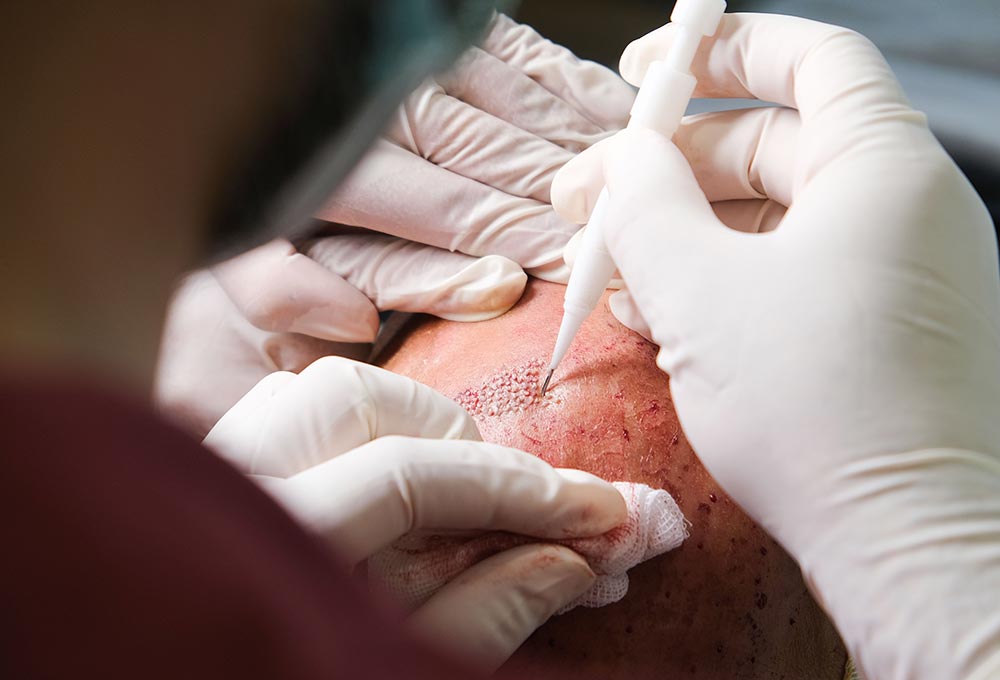What is the Ideal Age for Hair Transplantation?
One of the most frequently asked questions by individuals considering hair transplantation is the ideal age for the procedure. Hair loss progresses differently in each person due to genetic and environmental factors. Therefore, instead of setting a strict age limit, the focus is on the type and progression rate of hair loss. The suitable age for hair transplantation is typically when hair loss has stopped or stabilised. A detailed analysis and doctor’s recommendations can help determine the ideal time.


İÇİNDEKİLER
What is the Ideal Age Range for Hair Transplantation?
The ideal age range for hair transplantation is considered to be the period when hair loss has stabilised. Typically, the most successful results are observed in individuals aged between 25 and 45. However, this can vary depending on the type of hair loss and the quality of the donor area. If hair loss continues at a younger age, thinning may occur in the transplanted area over time. The significance of age lies in determining the long-term success of the procedure. A doctor’s assessment provides essential guidance on this matter.

Can Hair Transplantation Be Performed at 25?
At 25, hair loss usually begins to stabilise, making this age suitable for hair transplantation. However, if hair loss is still ongoing, postponing the procedure may be advised. Hair transplantation at a young age offers advantages such as stronger roots and faster healing. With proper planning, a hair transplant at 25 can provide natural and lasting results. Doctor evaluations are crucial for determining the right timing.
Can Hair Transplantation Be Performed at 30?
Age 30 is one of the ideal ages for hair transplantation. By this age, hair loss has often slowed down or stopped, leading to more durable results post-procedure. A hair transplant at 30 not only ensures a natural aesthetic appearance but also allows for a smoother recovery process. The doctor evaluates the individual’s hair structure to determine the most suitable method.
What Are the Results of Hair Transplantation in the 40s?
The 40s are an appropriate period for hair transplantation, often yielding positive results. The quality of the donor area and skin elasticity are critical factors in this age group. With the right technique and expertise, hair transplantation in the 40s can achieve natural appearance and hair density. Despite advancing age, a permanent and satisfying aesthetic look is achievable.
Why is Age a Significant Factor in Hair Transplantation?
Age plays a crucial role in determining the success and longevity of hair transplantation results. Undergoing the procedure at a younger age offers benefits like stronger roots and faster healing, but if hair loss continues, the results may be compromised. In middle and advanced ages, hair loss is typically stabilised, making the adequacy of the donor area a key consideration. The importance of age in hair transplantation lies in balancing aesthetic and medical factors effectively.
What Are the Advantages of Hair Transplantation at a Young Age?
Hair transplants performed at a young age generally utilise healthier and stronger hair roots, ensuring better graft retention and a more natural appearance. However, careful planning is essential as hair loss may still progress during younger years. The ideal time for transplantation is when hair loss has stabilised. With proper planning, young individuals can achieve permanent and successful results.

What Should Be Considered for Hair Transplants in Middle Age?
Individuals in middle age should consider the adequacy of their donor area and overall health condition when opting for hair transplantation. At this stage, hair loss has typically stabilised, allowing for longer-lasting results. Age is a critical factor in ensuring a natural look and successful outcomes. Proper planning with expert guidance is essential for achieving the best results.
Consult Now!
Fill out the form to get detailed information about the hair
transplant process and personalized solutions tailored for you!
How is Hair Transplantation Planned Based on Age?
Hair transplantation planning should take into account the patient’s age, type of hair loss, and donor area condition. At a younger age, adjustments may be needed post-transplant if hair loss persists. In middle and advanced ages, stabilised hair loss often allows for a single, comprehensive procedure. The significance of age varies based on individual characteristics and is determined through a thorough analysis.
Is Hair Transplantation Possible at an Advanced Age?
Hair transplantation at an advanced age is an effective option for individuals with suitable health conditions. While skin elasticity may decrease with age, natural-looking results can be achieved with the right techniques and expertise. Successful outcomes depend on the adequacy of the donor area and the individual’s overall health. It’s important to note that recovery may take slightly longer compared to younger individuals.
Risks and Opportunities of Hair Transplantation Over 50
For individuals over 50, hair transplantation may present challenges such as reduced skin elasticity, but successful results are possible with appropriate techniques. Thorough health screenings before the procedure are essential in this age group. Hair transplantation at an advanced age enhances hair density, improves aesthetic appearance, and boosts self-confidence. Potential risks can be minimised with proper medical supervision.
Recovery Process After Hair Transplantation at an Advanced Age
The recovery process following hair transplantation at an advanced age may take longer compared to younger patients, as skin regeneration slows with age. However, with proper care and adherence to medical advice, recovery can proceed smoothly. Hair transplantation remains a viable option for healthy individuals in their later years.
Longevity of Hair Transplantation Results in Older Individuals
The long-term success of hair transplantation in older individuals depends on the quality of the donor area. Transplanted hair provides a lifetime of aesthetic improvement, offering a natural and satisfying appearance. Proper planning and techniques ensure effective results, while regular care and a healthy lifestyle are key to maintaining longevity.
How Do Hair Transplant Results Vary by Age?
Hair transplant results can differ depending on the individual’s age. In younger patients, careful planning is required due to ongoing hair loss, while results tend to be more stable in older individuals. The ideal age for hair transplantation is a critical factor influencing both the success of the results and post-procedure satisfaction. A customised treatment plan is essential for each age group.
Do Hair Transplants Yield Faster Results in Younger Individuals?
In younger individuals, hair follicles are typically stronger, leading to quicker recovery and faster hair growth after the procedure. However, since hair loss may continue, post-transplant adjustments might be necessary. A hair transplant at age 25, when properly assessed and planned, can deliver effective and long-lasting results.
How Permanent Are Hair Transplant Results in Middle Age?
For individuals in middle age, hair loss is often stabilised, making transplant results more permanent. Procedures performed with the right techniques and by experienced professionals can achieve natural-looking outcomes. The importance of age in hair transplantation lies in its impact on the satisfaction and longevity of the results.
Can a Natural Look Be Achieved with Hair Transplants at an Advanced Age?
Hair transplants at an advanced age can achieve a natural appearance when appropriate techniques are applied. Designing a natural-looking hairline during graft placement is crucial. Hair transplantation at an older age not only meets aesthetic expectations but also enhances the individual’s overall quality of life.
What Factors Beyond Age Are Important for Hair Transplantation?
While age is a significant factor, the type of hair loss, the quality of the donor area, and overall health also play crucial roles in hair transplantation. The success of the procedure is directly linked to the accurate analysis of these factors. The ideal age for hair transplantation should be evaluated alongside these criteria.
The Impact of Hair Loss Type and Progression
The type and progression of hair loss are key considerations in planning a hair transplant. In cases of genetic hair loss, such as androgenetic alopecia, careful planning is essential. If hair loss is ongoing, the results may be at risk. The importance of age is most evident when hair loss has stabilised.

The Role of Overall Health in Hair Transplantation
Overall health is one of the eligibility criteria for hair transplantation. Conditions such as diabetes, hypertension, or skin disorders can influence the procedure. Comprehensive health checks should guide the planning process to minimise risks. The ideal age for hair transplantation is determined in alignment with these factors.
How Does Donor Area Density Change with Age?
The density of the donor area has a direct impact on hair transplant outcomes. As age advances, hair density in the donor area may decrease, creating limitations for the procedure. Effective use of the donor area with the right techniques is a critical factor in evaluating the importance of age in hair transplantation.
How is the Hair Transplant Process Planned According to Age?
The hair transplant process is tailored to the individual’s age, type of hair loss, and overall health. In younger individuals, additional sessions may be needed due to ongoing hair loss. In middle age, stabilised hair loss leads to more permanent results. For older individuals, factors such as donor area density and skin elasticity are carefully considered. The ideal age for hair transplantation is determined through a personalised treatment plan.
How is Long-Term Planning Done for Younger Patients?
For younger patients, where hair loss may still progress, careful planning is crucial. Long-term planning involves accounting for the progression of hair loss. For instance, creating a natural hairline and preserving sufficient donor areas are key priorities. The suitable age for transplantation depends on the individual’s type and stage of hair loss. With expert evaluation, natural and lasting results can be achieved.
How is the Treatment Process Organised for Middle-Aged Patients?
In middle-aged patients, hair loss is typically stabilised, making the planning process more straightforward. Hair transplants at this age offer advantages in terms of achieving both a natural appearance and long-lasting results. Specialists assess the donor area density and the patient’s overall health to create an effective treatment plan. The importance of age in hair transplantation lies in enhancing satisfaction with aesthetic outcomes.
Consult Now!
Fill out the form to get detailed information about the hair
transplant process and personalized solutions tailored for you!
What Tests Are Necessary Before Hair Transplantation at an Advanced Age?
Before undergoing hair transplantation at an advanced age, detailed health screenings are essential. Blood tests, skin analysis, and general health assessments help determine eligibility for the procedure. These tests ensure the process is safe and successful. Hair transplantation at an advanced age provides an effective solution for individuals with suitable health conditions.

